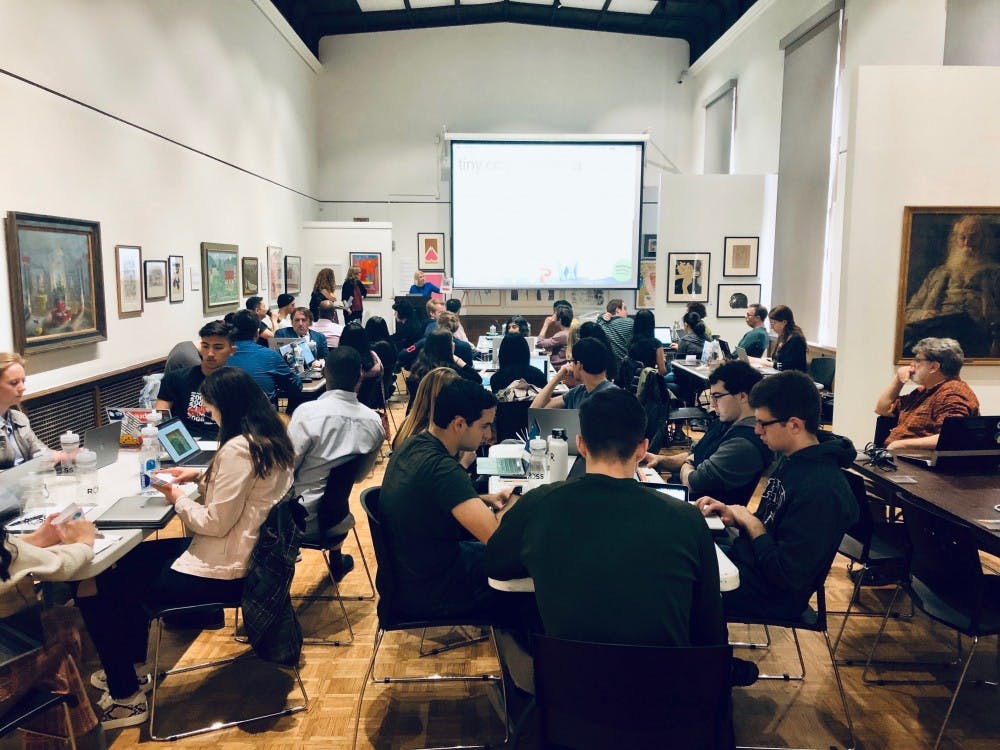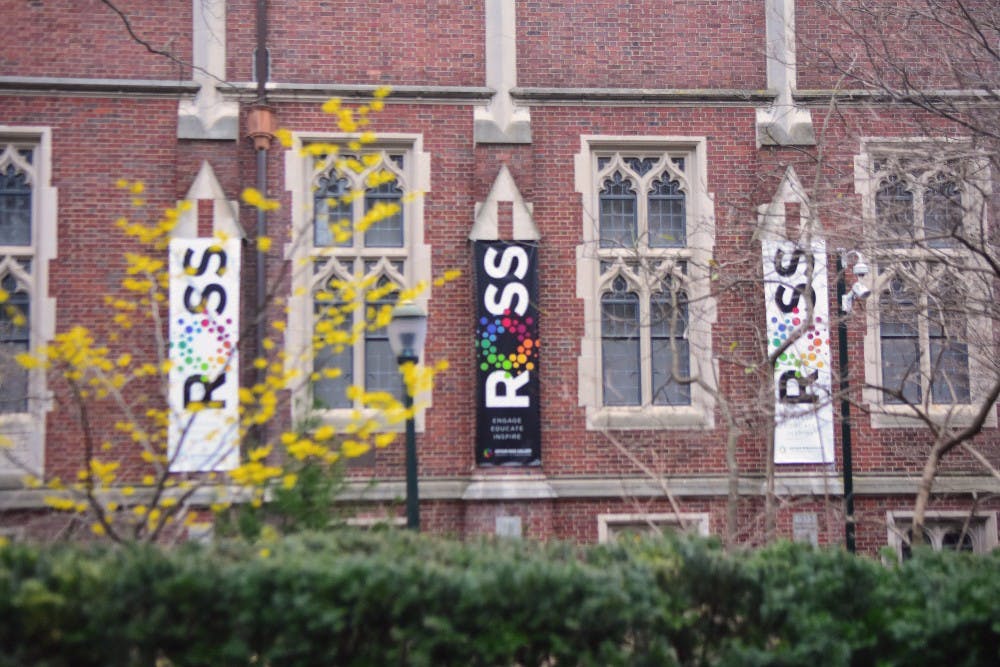
Arthur Ross Gallery Assistant Director and Associate Curator Heather Gibson Moqtaderi said the event was designed to be inclusive of students from art backgrounds. (Photo from Sara Stewart)
While hackathons have long catered to students primarily interested in technology, the Arthur Ross Gallery hosted its first Art + Data Hack-a-thon Wednesday to attract students from arts backgrounds.
The event drew about 60 data analysts and art enthusiasts who created coding projects based on art exhibit data. Participants received links to download curatorial data and images of artwork from the Arthur Ross Gallery. They then worked in small groups to write programs that incorporated this data in some way.
Wharton sophomore Kirti Shenoy wrote a program to detect the main color of an image and group images of the same color to produce a randomized collage.
“I think this is a great example of the interdisciplinary nature of Penn,” Shenoy said. “It incorporates aspects of data, coding, and art and brings it all together.”
Arthur Ross Gallery Assistant Director and Associate Curator Heather Gibson Moqtaderi, one of the organizers of the hackathon, said the event was designed to be inclusive of students from art backgrounds.
“[We] wanted to offer the opportunity to work with data to people who might be more from an arts background and make it less intimidating and inspire people in the arts to look toward technology and data for their curatorial and artistic practice,” she said.

This event was made possible by the support of the University of Pennsylvania Art Collection, the Office of the Curator, Office of the Provost, and The Price Lab for Digital Humanities.
Moqtaderi added that the hackathon was inspired by the gallery's "Citizen Salon" pop-up exhibit. The exhibit, which opened Dec. 1, features pieces that were voted on by the public and selected from Penn's art collection. Moqtaderi said her team was interested in exploring this unique, data-based way of selecting art pieces by holding a hackathon using the exhibit's voting data and the selected art pieces themselves.
“Because of that data-based curation, I thought it was important to incorporate one event that allowed us to really look at that with a team of people who are more accustomed to looking at data than a traditional art historian or curator,” Moqtaderi said.
The event was co-sponsored by the Penn Art Collection, the Office of the Curator, and the Office of the Provost. The Price Lab for Digital Humanities provided additional coding resources and data sets to help participants create their projects.
“[The Price Lab] did a good job of giving us a variety of tools to use based on which level we were at,” Shenoy said. “They made it more inclusive.”
Attendee Bridget Goldhahn agreed that the hackathon brought together a diverse set of people. Goldhahn is the communications director for the Consortium for Policy Research in Education, a community of education researchers housed in Penn's Graduate School of Education.
“I think that there’s a big effort at Penn to nurture creativity and get different people from different disciplines to get together and apply their different skill sets,” Goldhahn said. "This room is full of artists, internal and external, people of the Penn community, but also people who are programmers, musicians, graphic designers, and art historians."
The Daily Pennsylvanian is an independent, student-run newspaper. Please consider making a donation to support the coverage that shapes the University. Your generosity ensures a future of strong journalism at Penn.
Donate




